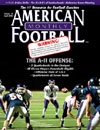AMERICAN FOOTBALL MONTHLY THE #1 RESOURCE FOR FOOTBALL COACHES
Article CategoriesAFM Magazine
|
Tech Personnel Run/Pass Comboby: Brent BrockTight Ends Coach, Middle Tennessee State University © More from this issue On behalf of Middle Tennessee State Football and Head Coach Rick Stockstill, we would like to present to you our Tech Formation: two tights/one back/two wide outs (12 personnel). We value our 12 personnel formation as we can not only dictate defensive alignment but also become a hybrid team with movement from both tight ends to allow mismatches in the run and pass game (See Diagram 1).
We basically try to plan for two things on a game-to-game basis: run inside zone or throw Curl/Flat. Obviously what the defense presents itself is usually a week-to-week plan to stop our tendencies. We want to run the....The full article can only be seen by subscribers. Subscribe today!
|
|
||||||||
| HOME |
MAGAZINE |
SUBSCRIBE | ONLINE COLUMNISTS | COACHING VIDEOS |
Copyright 2025, AmericanFootballMonthly.com
All Rights Reserved






